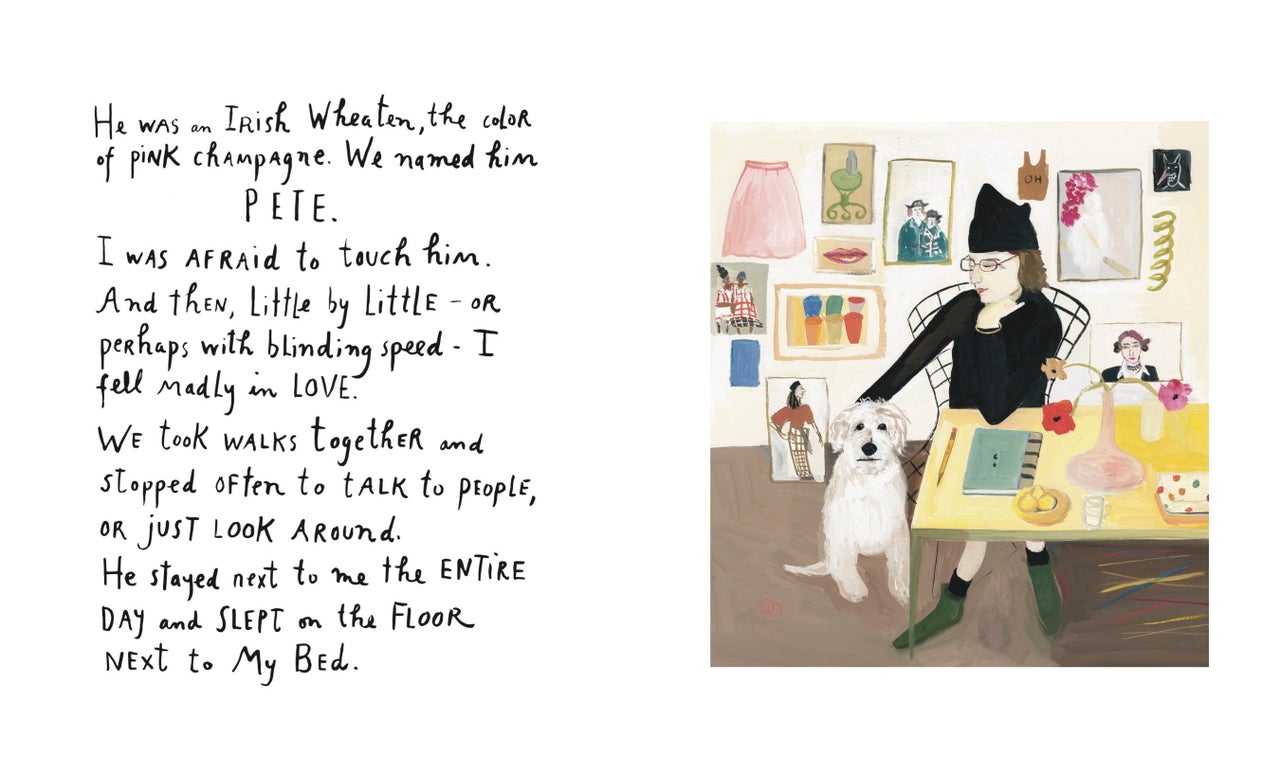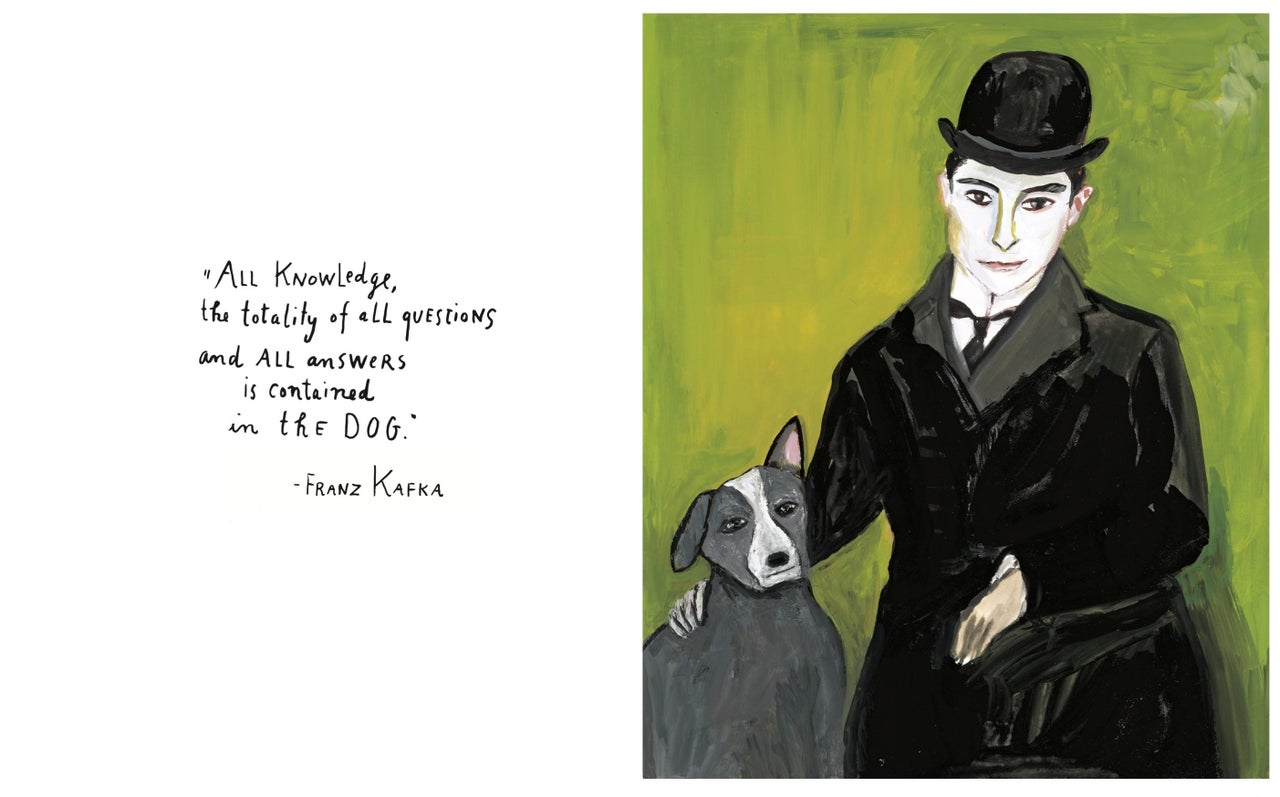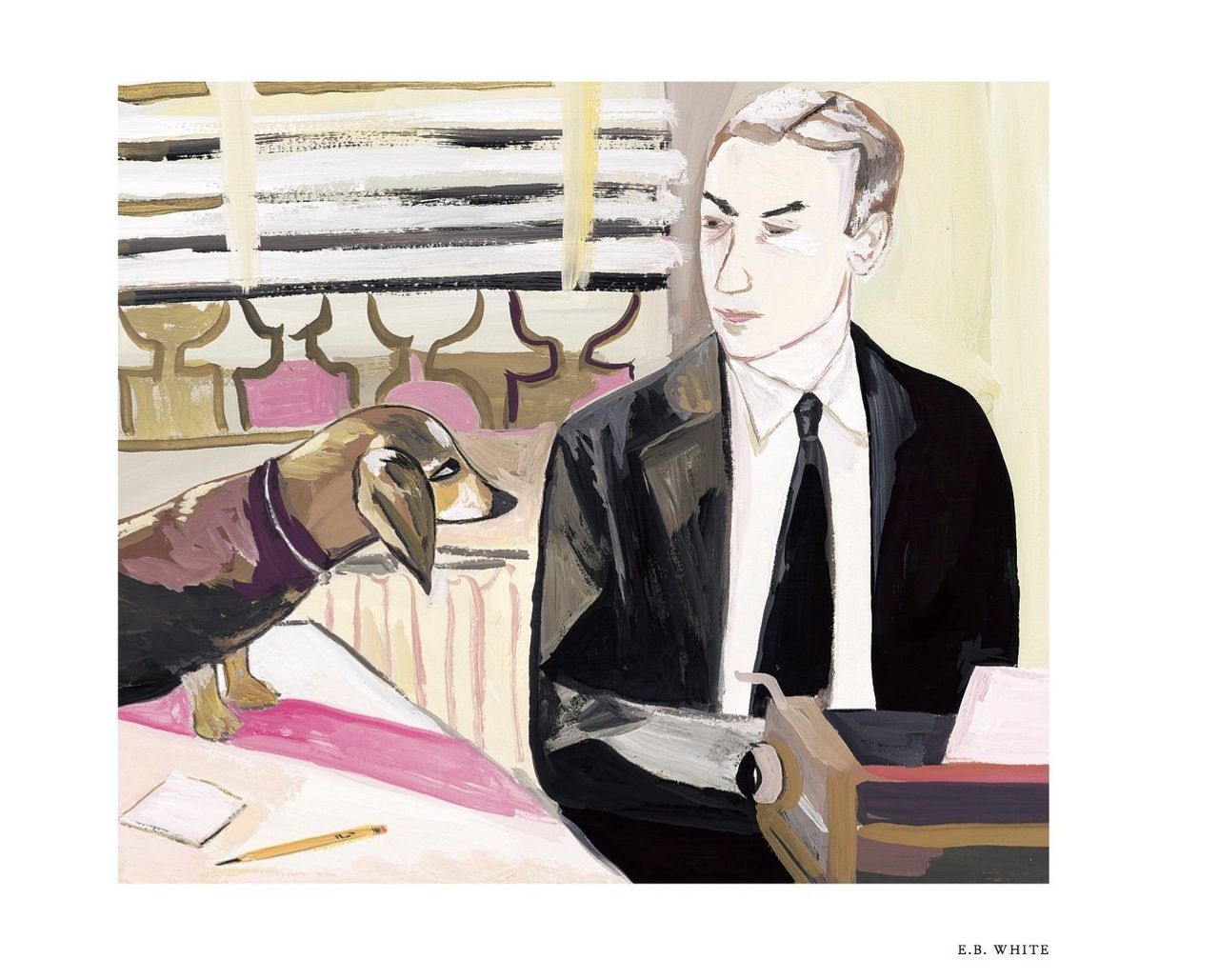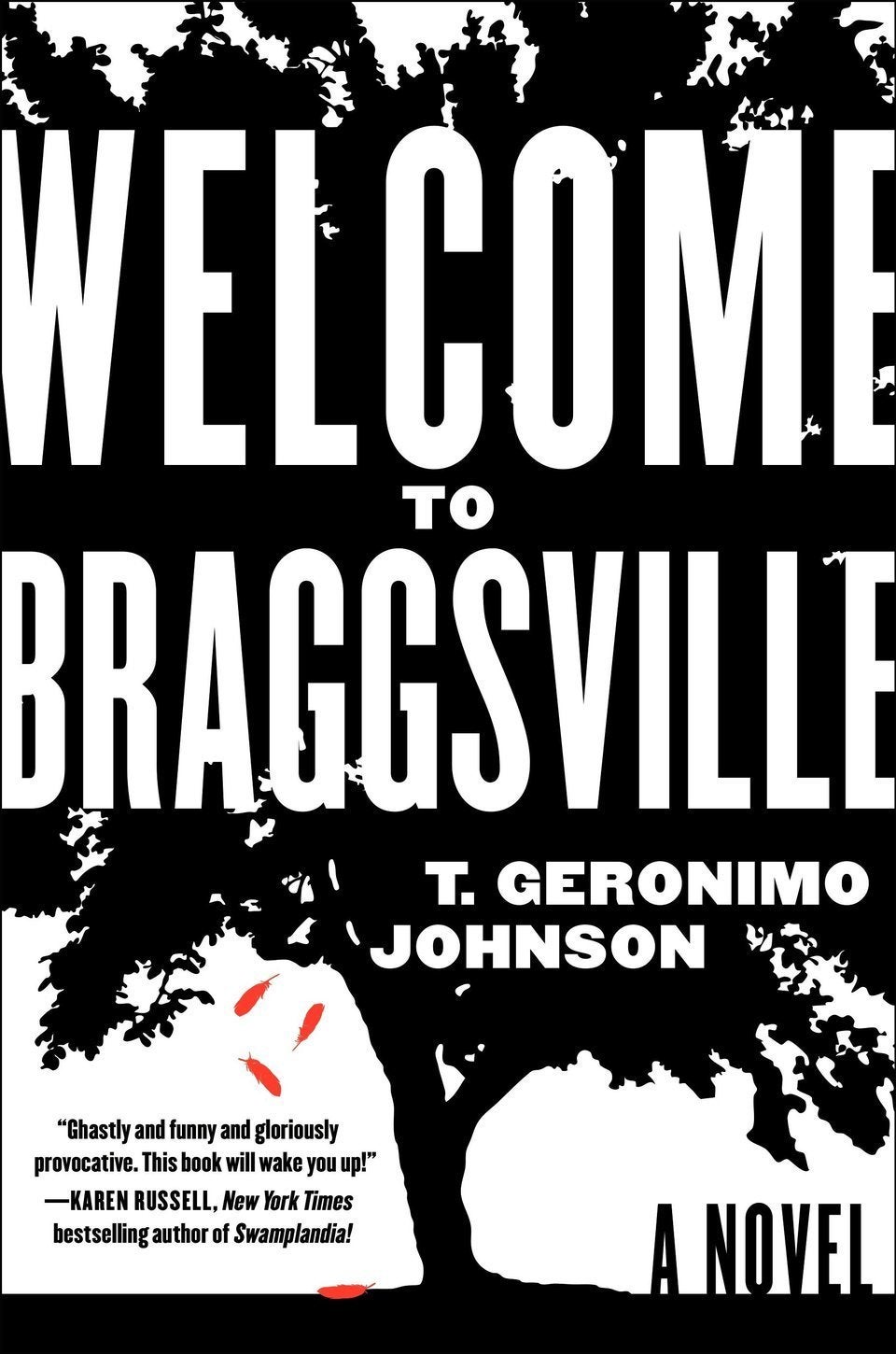When illustrator and children’s book author Maira Kalman’s husband and creative comrade died, she finally cast her pet-centric worries aside and bought a dog to keep her and her two children company. In her new book, Beloved Dog, she writes, “I was afraid to touch him. And then, little by little -- or perhaps with blinding speed -- I fell madly in love.”
The rest of the book is a sweetly poetic homage to dogs, and a survey of the influence the animals have had on Kalman’s work, which could be described as whimsical, pleasantly peculiar and folksy. She’s illustrated Kate Spade’s maltese and E.B. White’s hound. Each illustration funnels the human subjects' feelings into the expressive face of a canine counterpart.
When you consider the body of Kalman’s work -- she’s illustrated Michael Pollan’s Food Rules and William Strunk and E.B. White’s The Elements of Style, gracing each with subtle humor -- it make sense that dogs would be an ideal subject for her. They’re funny, wordlessly emotive, and, like Kalman, they love nothing more than observing their surroundings on long, leisurely walks.
We talked with Kalman about pets, art and writing books for kids versus writing books for adults.

Your new book is great, particularly your introduction about your own relationship with dogs. Do you have a dog now, or do you just enjoy observing other dogs?
Sadly, I don’t have a dog now, and I spend a lot of my time following and hugging and talking to other dogs that I meet on the street. I went to Central Park this morning and there are hundreds and hundreds of dogs, and I was photographing them and having a good time from a distance.
You’ve illustrated many dogs you’ve seen on the street, but also many writers with their dogs. Do you have a favorite dog-and-owner relationship?
I think a lot about Gertrude Stein and her dogs, the big poodle and the little dachshund. I guess I tend to think about the great women writers -- Vita Sackville West and Virginia Woolf. I just love thinking about these women in their gardens with their dogs, and their lives, and their loves.
For sure. And what do dogs symbolize to you? They’ve symbolized so many things throughout art history, and in folk art especially.
For me, if I had to condense it, I’d say they represent unconditional love. In the sense that that’s what you’re getting, and that’s what you learn to give, without any restraint, without any judgement, without any expectations. And to have that kind of connection in this world, there’s nothing more fulfilling. One hopes you have it sometimes with other people, but not necessarily. I think that’s what happens when you have a dog.
How do you approach painting a dog? Is it different than how you approach painting a human? Does painting a dog express anything that painting a human might not?
I like painting a dog because they’re not going to call me up and say something like, I don’t like the way you did my nose, or something like that. There’s no danger in having a dog critique you other than maybe eating the painting. I’m probably freer and happier painting dogs than I am painting people.
Your work could be characterized as whimsical but your subjects -- even your canine subjects -- can be unsettling or even sinister at times. Why do you think it's important to create that tension?
I think if it were only whimsical, it would be pretty vapid. People inhabit both worlds that are very funny, and worlds that are very sad. I try to think about the human condition in a much more real way. That is about tenderness, and empathy, and pathos. It’s about understanding that people struggle and suffer. I always want to paint lighthearted and whimsical things, but I also want to let you know that I understand that we’re all in this together, and sometimes it’s not easy at all.
You definitely have a sense of humor in your dog drawings and other work. Why do you find dogs funny?
I find everything about dogs funny. That they can’t talk and they express so much! There’s something about the look of a dog that walks by on a street, or anywhere, and you burst out laughing. It’s like meeting a fabulous new friend. They’re just natural-born comedians, without trying.

And that makes them the perfect subject for the tone of your work. Why do you think humor is an important aspect of art and illustration.
Well, it’s an important aspect of life. I always say if you don’t have a sense of humor you might as well be dead. And maybe even after you’re dead, you should have a sense of humor. The nature of the world, from my family’s point of view, anyway, is that it’s really important to laugh at the things that happen to you in life. That gives you courage and energy to go on.
The language you use in this book is straightforward yet emotionally honest. Would you say it’s for kids or adults or both?
I wrote the book for adults, but I’m talking to people now who’ve looked at the book and they think it’s appropriate to share with a child. Even though there are sad parts, there’s nothing wrong with sharing that with a child because there’s also wonderful stuff and funny stuff.
When you set out to write a book, do you make that differentiation? When you decide it’s for kids or for adults, does your approach change?
It doesn’t really change that much. I may tone down the language for children a little bit. I always said I don’t want to talk down to kids and I don’t want to talk up to adults. I just want to tell my story. And I think where that lands is somewhere in the place that’s good for both audiences.
Also on HuffPost:

